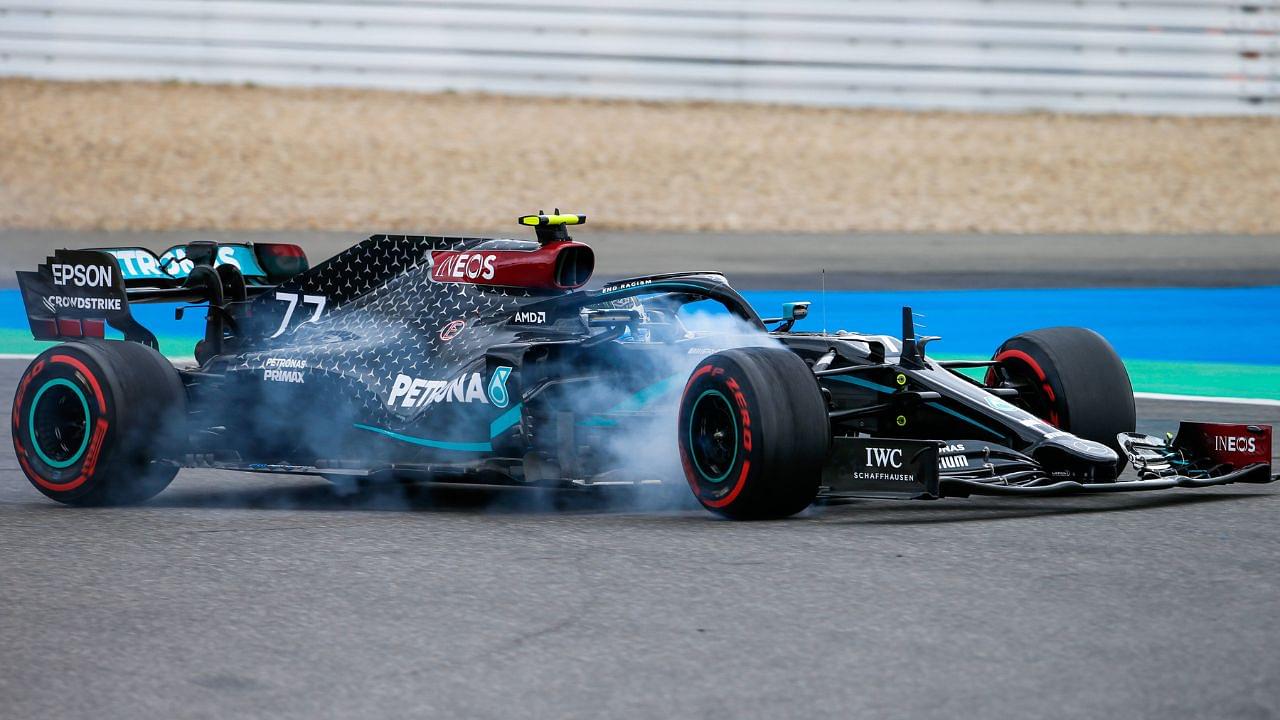F1 cars are a complex piece of machinery but they don’t have everything sorted due to several technical constraints. The functional parts of an F1 car can be simpler and more mechanical, relative to a modern-day road car. While we have anti-locking braking systems (ABS) and different types of active suspensions, Formula 1 teams have to keep things stiff and old-school in some of these areas. This is what can cause lock-ups while braking in F1 cars.
Braking is quite an important aspect of driving an F1 car, given the extent of speeds drivers have to accelerate and decelerate. So, the lack of an ABS that avoids skidding puts all the more importance on drivers’ skills in avoiding lock-ups.
What is a Lock-Up and how is it caused?
As F1 drivers explained in a video by Formula1.com, a Lock-Up is when drivers brake too hard and one or couple of the tires suddenly stop moving. Drivers struggle with lock-ups on several corners, especially in hard or tight braking zones. The most common cause of a lock-up is drivers braking sharply or hard.
Due to hard braking, the brake discs move slowly or stop relative to the tire’s motion. This causes the tire to stop rotating suddenly and a puff of smoke comes out, as the heat energy gets dissipated. The absence of ABS like in road cars, will cause the tire to skid and create flat spots on the tire surface,
It is mostly up to drivers to avoid lock-ups and ensure they brake in time to avoid causing unnecessary wear on their tires. However, at times, if there are mechanical issues with the braking systems, due to high temperatures on the brake pads or calipers, it can cause a fading effect that causes lock-ups.
The other cause of a lock-up is old worn tires. As tires get old, they naturally lose grip and drivers can struggle to rotate their car smoothly and often lock up.
Effects of a Lock-Up on F1 Cars
When any driver locks up, it will impact the race performance and speed on those tires. As the tires get flat spots due to locking up, the rubber on that tire can cause vibrations, which drivers don’t like. On top of this, drivers also lose grip and performance from the tire, so lap times can suffer.
The flat spots on tires can aggravate further cuts or punctures if drivers stay on the locked-up tire set for too long. Usually, lock-ups can cause slow punctures with a loss of air pressure or even blowouts in extreme cases.
Besides the tire, even the braking system may suffer wear and tear due to constant lock-ups. The brake discs, pads, and calipers can have increased wear and tear, which causes overheating or potential safety hazards in the system.
How do F1 drivers manage lock-ups?
F1 drivers have to be quite vigilant about how they need to brake during races to avoid lock-ups. However, they are humans and cannot be perfect at braking at the right point of the track to navigate a corner smoothly all the time. So there are multiple ways they manage after locking up.
One way is to release the brakes to regain control of the car. As the tire that locks up loses contact with the tarmac and thus it can be difficult for drivers to regain control of that wheel while in the air. So, releasing the brakes can help them restart the tire rotations and then get on the throttle to keep going,
In this process, steering correctly also helps, to get the car back on the racing line where there is more grip. As tires lose grip due to flat spots, it is important to get the tires back in shape as soon as possible, similar to when they experience graining on tires.
Slowing down is of course the natural instinctive step that any driver would do after a lock-up. It reduces the risk of a potential crash. Pitting for a fresh set of tires is the best responsive action to avoid losing grip and performance on a locked-up set of tires.
How can drivers and teams avoid lock-ups?
One way is to distribute the brake balance through the front and rear axles of the car more evenly. Depending on the type of corner and which tires would there be more load upon, the drivers decide to distribute their brake bias to the front or the rear.
Another way is of course to ensure that the brake pads, discs, and calipers are upgraded before they wear out too much. If any driver is experiencing too much overheating of brakes, the chances of frequent lock-ups increase. So, to ensure a smooth reliable braking performance, changing brake pads and discs is a regulation activity by F1 teams.
Teams also can look to alter the tire pressures and camber to ensure that they have better tire management. This improves traction and thus drivers don’t have to worry about tires locking up constantly, as per their driving style. Pirelli, F1’s official tire supplier stipulates the tire pressures and camber limits so teams don’t have to worry about setting it in a custom manner.
The most obvious method is to ensure drivers get good training if they are faltering to brake efficiently at certain corners. Testing and Free Practice sessions are the perfect opportunities for drivers to hone their braking skills, especially on new tracks.





